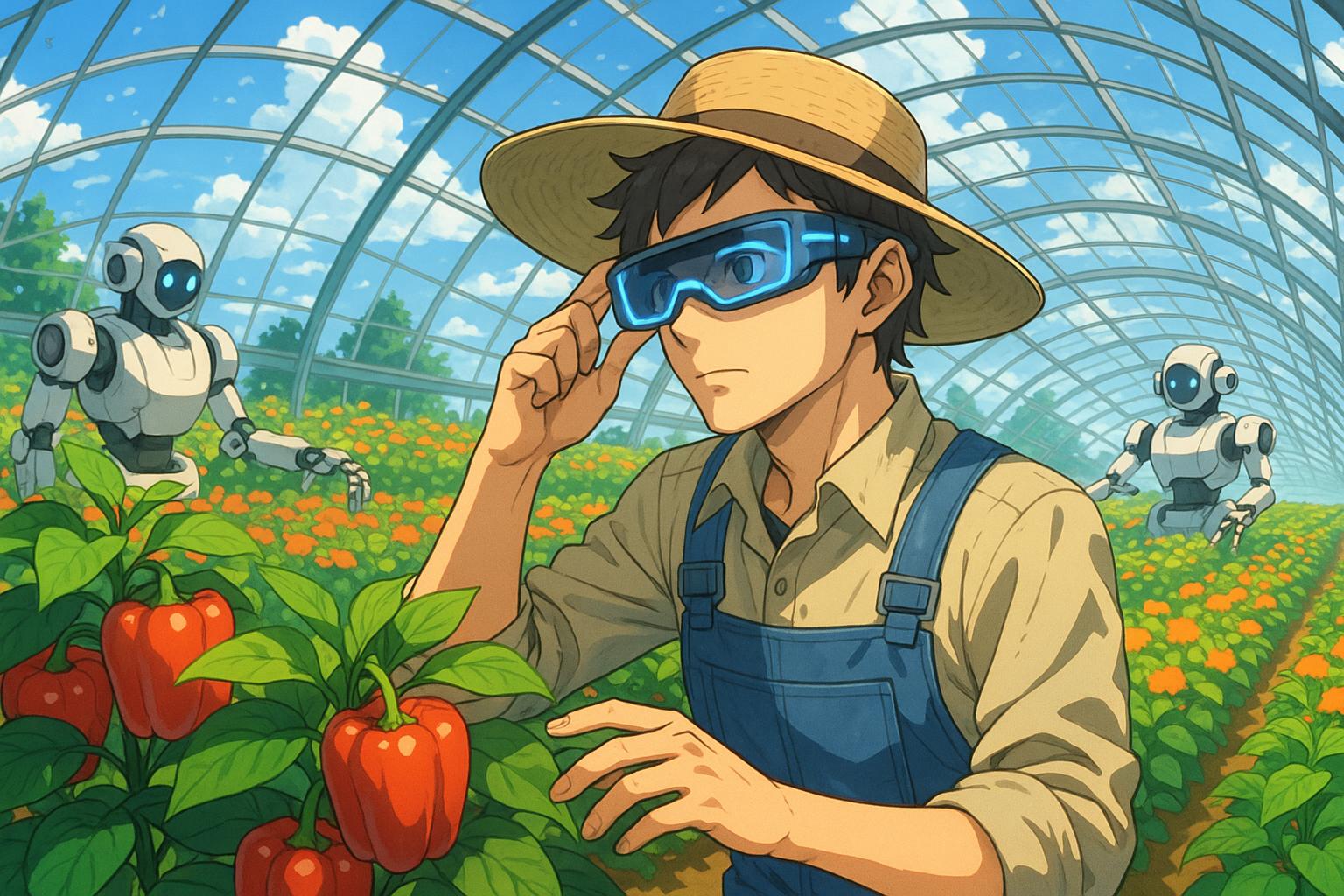The landscape of agriculture is undergoing a transformative shift, driven by advancements in artificial intelligence (AI) that hold promise for enhancing food security and addressing global hunger. As the climate crisis intensifies and resources become increasingly scarce, solutions are being sought to ensure sustainable food production systems. The United Nations has set an ambitious goal to end hunger worldwide by 2030, and innovative technologies could play a pivotal role in achieving this aim.
In various corners of the world, farmers are already harnessing AI-driven tools to combat pressing agricultural challenges. In Cameroon, for instance, Adamou Nchange Kouotou has introduced an AI-supported app that empowers farmers to assess the health of their crops. By identifying pests and diseases through image recognition, the app provides tailored advice that directly supports smallholders dealing with degraded soils, particularly in sub-Saharan regions. This direct assistance is crucial for enhancing small-scale farmers' livelihoods and promoting food security.
Meanwhile, in southern Spain—often referred to as Europe's vegetable garden—Joaquín Soriano Fernandez employs sensor technology to optimise conditions in greenhouses. His system adjusts temperature and humidity levels based on real-time data, enabling water-saving irrigation methods that are vital for drought-stricken areas. This integration of AI not only conserves water but also supports the broader agricultural framework by increasing efficiency and productivity.
The potential of AI extends beyond crop monitoring to include innovative harvesting techniques. In Madrid, engineer Roemi Fernandez Saavedra is at the forefront of developing robotic harvesters that can discern ripe produce, such as tomatoes and eggplants, thus reducing labour costs and addressing issues associated with under-resourced human labour in agriculture. These advancements aim not only to enhance productivity but also to alleviate the often challenging working conditions faced by many agricultural workers.
Food waste remains a significant issue globally, with Germany alone discarding approximately eleven million tons of food annually. A notable portion of this waste arises from restaurants and canteens. In Lünen, a company canteen has adopted an AI forecasting system designed to predict lunch demand accurately, thereby minimising excess food production. Such innovations are critical as they contribute not only to economic savings but also to an environmentally sustainable approach to food management.
Despite these promising developments, the integration of AI in agriculture is fraught with ethical considerations. Issues such as data privacy, the energy demands associated with AI technologies, and the impact on traditional farming practices must be carefully navigated. As highlighted in discussions by various experts, balancing technological benefits with ethical responsibilities is essential for achieving the long-term goals of sustainability and equity in agricultural practices.
Furthermore, AI is revolutionising farming through various methodologies, including predictive analytics, precise irrigation systems, and comprehensive resource management. Applications like crop health monitoring and intelligent pest management are increasingly being adopted to increase yields and ensure efficient resource usage. For instance, machine learning algorithms are used to analyse weather patterns, soil conditions, and crop health, thereby enabling farmers to make informed decisions that significantly impact their harvests.
Overall, while the challenges posed by climate change and resource scarcity are considerable, the burgeoning field of AI presents various opportunities for reshaping agricultural practices. With correct implementation, these technologies can lead to significant advancements in food security, environmental sustainability, and economic viability for farmers across the globe. As the agricultural sector embraces these changes, the success of AI in addressing world hunger may hinge on thoughtful approaches that prioritise both human and ecological well-being.
📌 Reference Map:
- Paragraph 1 – [1], [2]
- Paragraph 2 – [1], [3], [4]
- Paragraph 3 – [1], [5]
- Paragraph 4 – [1], [6]
- Paragraph 5 – [2], [7]
Source: Noah Wire Services
